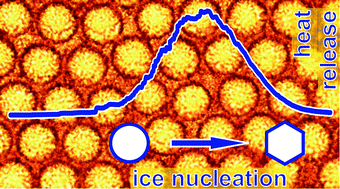The homogeneous ice nucleation rate of water droplets produced in a microfluidic device and the role of temperature uncertainty
Abstract
Ice nucleation was investigated experimentally in

* Corresponding authors
a
Bielefeld University, Faculty of Chemistry, D-33615 Bielefeld, Germany
E-mail:
thomas.koop@uni-bielefeld.de
b Bielefeld University, Faculty of Physics, D-33615 Bielefeld, Germany
Ice nucleation was investigated experimentally in

 Please wait while we load your content...
Something went wrong. Try again?
Please wait while we load your content...
Something went wrong. Try again?
B. Riechers, F. Wittbracht, A. Hütten and T. Koop, Phys. Chem. Chem. Phys., 2013, 15, 5873 DOI: 10.1039/C3CP42437E
To request permission to reproduce material from this article, please go to the Copyright Clearance Center request page.
If you are an author contributing to an RSC publication, you do not need to request permission provided correct acknowledgement is given.
If you are the author of this article, you do not need to request permission to reproduce figures and diagrams provided correct acknowledgement is given. If you want to reproduce the whole article in a third-party publication (excluding your thesis/dissertation for which permission is not required) please go to the Copyright Clearance Center request page.
Read more about how to correctly acknowledge RSC content.
 Fetching data from CrossRef.
Fetching data from CrossRef.
This may take some time to load.
Loading related content
